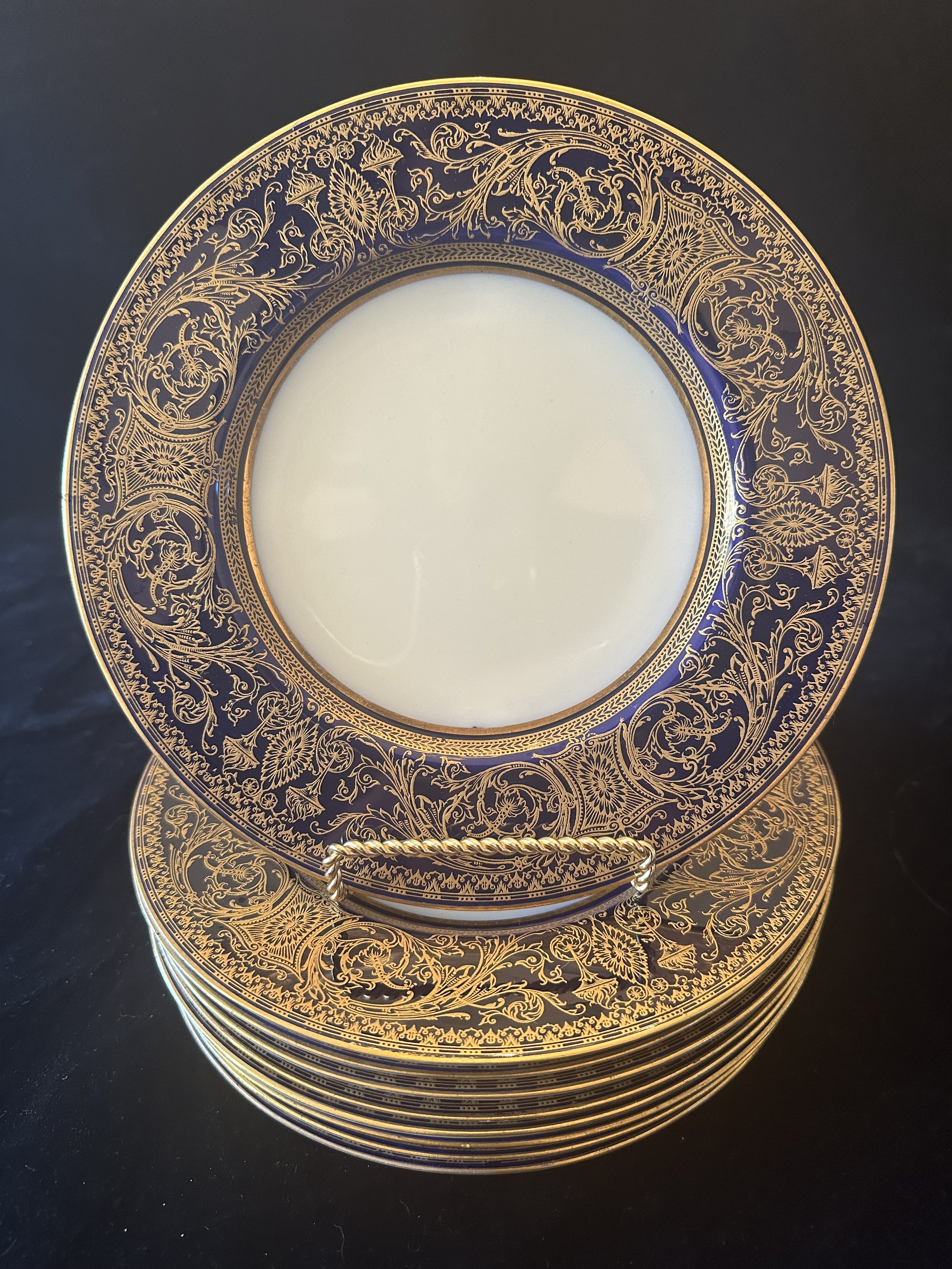Identifying Authentic Vintage China
Antique Royal Worcester Embassy
Blog Post: How to Identify Authentic Vintage China
Introduction
Vintage china is a timeless treasure, admired for its beauty, craftsmanship, and historical value. Whether you're a collector or looking to add a unique piece to your home, knowing how to identify authentic vintage china is essential. This guide will walk you through the key characteristics, markings, and tips to ensure you're making an informed purchase.
1. Examine the Manufacturer's Mark
Most authentic vintage china features a hallmark or stamp that identifies the manufacturer.
Location: Typically found on the underside of the piece.
Key Details:
Look for the manufacturer's name, logo, or symbol.
Research the design to match it with known vintage patterns.
Authentic pieces often include information like the country of origin or production date.
Example:
Royal Doulton and Wedgwood have distinct marks that evolved over the years, making it easier to date their pieces.
2. Understand the Material and Finish
Porcelain vs. Bone China:
Porcelain: Dense, smooth, and often translucent when held against light.
Bone China: Contains bone ash, giving it a lighter weight and delicate feel.
Glaze and Finish:
Vintage china often has a smooth, glass-like glaze.
Check for crazing (fine cracks in the glaze), which can indicate age but doesn’t always mean authenticity.
3. Inspect for Patterns and Colors
Vintage china patterns often reflect the trends of their era.
Consistency:
Authentic pieces have consistent patterns and color application. Hand-painted details may show slight variations.Style and Era:
Art Deco (1920s-1930s): Bold geometric designs and bright colors.
Victorian (1800s): Delicate florals, gold trims, and intricate designs.
Reference Books: The Collector’s Encyclopedia of Limoges Porcelain
4. Check the Weight and Feel
Vintage china tends to be lighter than modern reproductions due to refined materials.
Run your fingers over the edges and decorations. Authentic vintage china often has a fine, delicate feel, especially on embossed or raised designs.
5. Look for Signs of Wear
Age Indicators:
Slight fading of patterns or gilding is common in older pieces.
Small imperfections, like uneven edges, can indicate hand-crafted quality.
Avoid Overly Perfect Pieces:
Reproductions often look too flawless to be vintage.
6. Study Backstamps and Logos
Research Manufacturer Evolution:
Many brands changed their stamps over time. For example:Early Wedgwood pieces often include the word "England" after 1891.
Pieces marked "Made in Occupied Japan" were produced between 1945-1952.
7. Seek Expert Opinions
If in doubt, consult an antique dealer or appraiser who specializes in china. They can help verify authenticity.
Online communities and forums can also be great places to get feedback from fellow collectors
